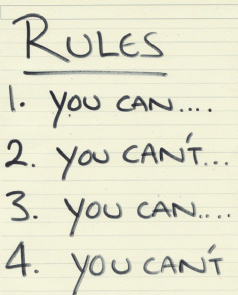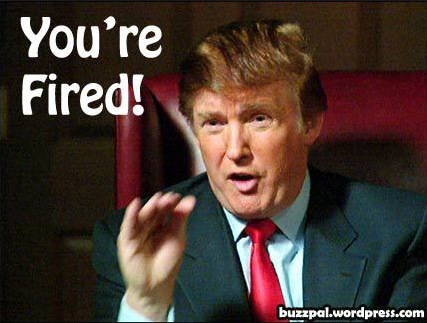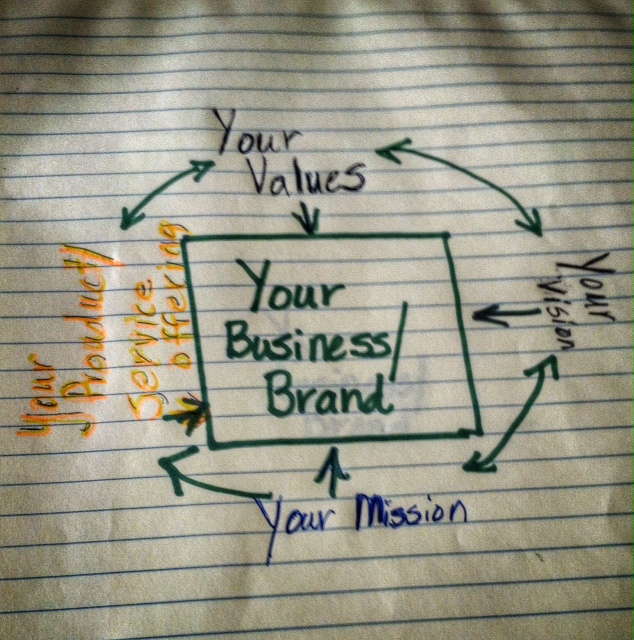Risk Mitigation: The #1 Reason To Have A Workplace Social Media Policy
Social networking sites are everywhere, including the workplace. The number of problems I see each week with respect to issues arising from social media are astounding. They range from employee’s use of Facebook to managers who recommend employees on LinkedIn or reveal too much on Facebook. So, if you want to mitigate risk, this is the #1 reason to have a workplace social media policy.
There have been some other famous incidents of social media wreaking havoc in the workplace:
- Greg Smith’s resignation from Goldman Sachs last month generated Twitter frenzy within minutes of Mr. Smith’s public electronic resignation post in the New York Times along with unproven allegations against Goldman Sachs. Comments about Goldman Sachs continue to filter back to the Twitter hashtag #goldmansachs.
- A part-time employee assigned to assist in cleaning up at the scene of a suicide in Ontario used his phone to immediately post photos of the deceased to his personal Facebook page with a caption identifying the workplace.
- A New Brunswick teacher suffered post-traumatic stress syndrome after several former students posted false and defamatory content on Facebook.
- A US IT staffing firm has sued one of its former employees alleging that she has violated the terms of a non-compete agreement through her conduct on LinkedIn by soliciting her former employer’s employees and clients and by communicating and connecting with a number of them by using the LinkedIn professional network.
In short, these are simply new variations of old workplace themes (i.e., defamation, violation of confidentiality, workplace bullying, harassment, non-competition and non-solicitation) but now with a global social media twist. And then there’s that other issue of lost productivity and brand damage. Employees may spend an excessive amount of work time on social networking sites and may also make derogatory comments about an employer, client or customer that can come back to bite. If a business hasn’t already, it should revisit its existing policies to ensure that misuse is addressed accordingly and updated to include social media misuse.
Social networking impacts the workplace:
- People spend 700 billion minutes per month on Facebook;
- More than 250 million people access Facebook through their mobile devices;
- More than 2.5 million websites have integrated with Facebook;
- 30 billion pieces of content is shared on Facebook each month;
- 190 million average Tweets per day occur on Twitter;
- Twitter is handling 1.6 billion queries per day;
- Twitter is adding nearly 500,000 users a day.
If there is a marketing or information exchange use for social networking, we recommend that your policies don’t throw the baby out with the bathwater. Instead, think about what limitations should apply to those individual employees who do use your social networking and maybe have a clear plan on how to develop social networking so that it is effective for you.
My advice is to update your policy so that you can encourage good social media use while enforcing some boundaries. Some aspects of a good policy include:
- Whether an employee can use social media on company time or whether it is limited to personal time;
- Define acceptable and unacceptable activities/use;
- Social networking must not interfere with work;
- Employees must make it clear that their personal views are theirs alone and do not represent the views of their employer.
- Integrate with workplace harassment and bullying policies;
- Ensure employees respect confidential and proprietary information including logos, copyright or registered trademarks;
- Make discipline for violating the policy explicit and that termination may result;
- A review process that ensures employees are given an opportunity to ask questions about the policy;
- Well trained managers.
Develop a policy if you don’t already have one which embraces social media while creating boundaries that protect your business and your ability to manage your employees. Also, as the technology continues to evolve, keep up to date and routinely audit your policy to ensure that it continues to be relevant and protect your interests.
For more information on Risk Mitigation, check out : Mitigate Business Risks: Implement a Social Media Council
Want to learn even more? Sign up for our newsletter at TaylorMade Solutions (insert “newsletter” into inquiry box)
About Clarence Bennett:
Clarence is also a member of the Labour and Employment with the Fredericton office of Stewart McKelvey.
Clarence’s practice has focused on counselling employers over a wide spectrum of labour and employment law issues. He has been a commentator on CBC radio and in The Lawyers Weekly on labour and employment issues and is the Editor of Atlantic Employers Counsel, a quarterly Labour and Employment journal published by Stewart McKelvey
Clarence is a member of the Law Society of New Brunswick and a member of the Canadian Association of Counsel to Employers. He also has a Master of Laws from Osgoode Hall with a specialization in Labour and Employment Law.
Clarence has appeared before numerous administrative and arbitration tribunals, Labour and Employment Boards, and all levels of Court including the Supreme Court of Canada.















